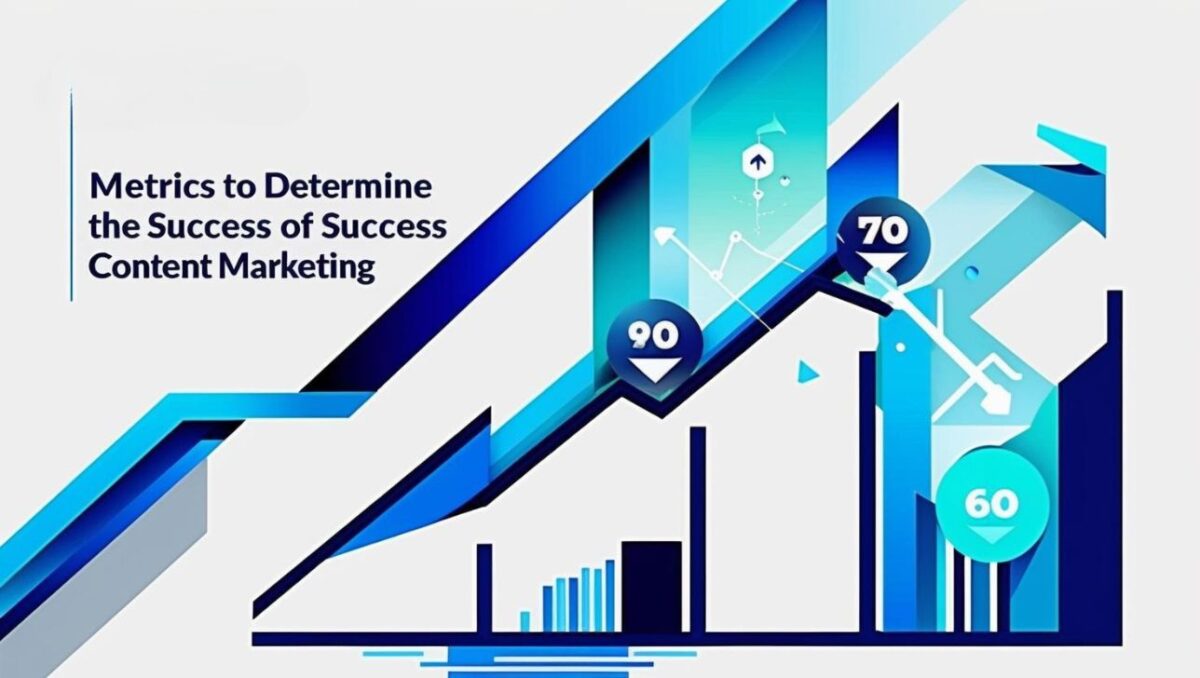Content marketing represents a strategic approach focused on creating and distributing valuable, relevant, and consistent content to attract and retain a clearly defined audience. Our aim is to drive profitable customer action by providing solutions and insights that our audience actively seeks. Let’s dive in and find out how our content marketing tips can transform your business strategy.
Content Marketing Definition
Content marketing involves crafting and sharing online materials such as blogs, videos, and social media posts that do not explicitly promote a brand but intend to spark interest in its products or services.
- Focuses on useful information and storytelling.
- Builds trust and fosters strong relationships with customers.
- Positions brands as thought leaders in their respective industries.
Why Use Content Marketing?
Employing content marketing can significantly elevate your brand’s presence and influence in the market.
- Increases brand awareness, helping to reach a broader audience.
- Engages audiences by addressing their pain points and interests.
- Generates leads and nurtures customer relationships.
The Importance of Content Marketing
Recognising the importance of content marketing can be a game-changer for business growth.
- Drives organic traffic to your website.
- Enhances customer engagement and loyalty.
- Facilitates informed decision-making for potential customers.
Example: A small garden centre that blogs regularly about plant care tips sees increased foot traffic and sales during seasonal changes.
Content Marketing Examples
Real-world examples illustrate how companies effectively utilize content marketing.
- Red Bull’s extreme sports videos captivate and engage sports enthusiasts.
- HubSpot’s in-depth marketing blogs position them as industry leaders.
- GoPro’s user-generated content showcases product versatility.
How Content Marketing Works
Understanding the mechanics of content marketing ensures you harness its full potential.
- Create content tailored to your audience’s interests.
- Distribute content across multiple platforms for maximum reach.
- Foster community interaction and feedback to refine strategies.
Content marketing empowers businesses to engage audiences, build trust, and drive profitable actions. Understanding the inner workings of content marketing is crucial for crafting strategies that resonate with your target audience and effectively deliver results. In this guide, we’ll take you through the core components of how content marketing functions and why it is an essential part of modern business strategy.
Understanding the Concept
At its heart, content marketing focuses on creating and distributing valuable, relevant, and consistent content to attract a clearly defined audience. It’s not about the hard sell; it’s about providing real value.
- User-Centric Approach: Content should address the specific needs, problems, or interests of your target audience.
- Value Proposition: Aim to offer more than just product information; provide insights, entertainment, or educational content that adds value to your audience’s lives.
The Content Creation Process
Crafting high-quality content is a foundational aspect of effective content marketing.
- Ideation: Start with brainstorming sessions to generate a pool of ideas that are aligned with your brand’s objectives and audience needs.
- Research: Dive deep into the topics chosen to ensure that your content is authoritative and backed by credible sources.
- Planning: Develop a clear content calendar to keep track of content creation timelines and publishing schedules.
Example: A tech startup creates a series of blogs detailing the latest trends in artificial intelligence, enriching their audience with knowledge that’s both current and beneficial.
Distribution Strategies
It’s not enough to create great content; it needs to be seen by your target audience. Distribution is key to maximizing content visibility and impact.
- Social Media: Share your content on platforms like Facebook, LinkedIn, and Twitter where your audience is most active. Ensure each share is tailored to the platform for maximum engagement.
- Email Marketing: Utilize newsletters to deliver content directly to subscribers’ inboxes, building a loyal readership.
- SEO Optimisation: Ensure your content is optimised for search engines by using relevant keywords, creating compelling meta descriptions, and incorporating internal and external links.
Engagement and Interaction
Content marketing thrives on fostering engagement and building a community.
- Call to Action (CTA): Incorporate clear and compelling CTAs within your content to guide your audience towards desired actions.
- Comments and Feedback: Encourage readers to leave comments and engage with the content, providing a space for dialogue and community building.
- User-Generated Content: Invite your audience to contribute their own content, such as reviews or testimonials, to enhance authenticity and trust.
Example: A fashion retailer invites customers to share photos wearing their outfits on Instagram, creating a vibrant community around the brand.
Analytics and Refinement
Content marketing is an iterative process; measuring results and refining strategies is essential for success.
- Performance Metrics: Track website analytics, engagement rates, and conversion metrics to evaluate the effectiveness of your content.
- A/B Testing: Experiment with different headlines, formats, and distribution channels to determine what resonates best with your audience.
- Feedback Loops: Continuously seek audience feedback to understand their evolving needs and interests.
Example: A fitness app monitors which blog topics receive higher engagement and uses this data to refine their content strategy, focusing on areas that drive the most interaction.
Content Marketing Guide: Long-term Benefits
When executed correctly, content marketing builds long-term relationships and generates continuous value for both businesses and their audiences.
- Brand Authority: Over time, consistent, high-quality content positions your brand as a leader in its field.
- Customer Loyalty: By providing ongoing value, businesses nurture loyal customers who are more likely to purchase repeatedly.
- Sustainable Growth: Organic content that resonates yields sustained traffic and leads over time, reducing dependency on paid advertising.
Content marketing is a dynamic and powerful tool for driving business growth and engagement. By understanding how it works and implementing strategic content creation and distribution practices, businesses can effectively reach their audiences and achieve meaningful outcomes. At Alloy Marketing, we guide our clients through this ever-evolving landscape, ensuring their content marketing efforts drive both conversation and conversion.
Forms of Content Marketing
Various content forms cater to different audience preferences and goals.
- Blogs and articles: Written insights and information.
- Videos: Engaging visual content for storytelling.
- Podcasts: Audio discussions on industry-relevant topics.
- Infographics: Visually appealing data representations.
Key Elements of a Content Marketing Strategy
A robust strategy guides content marketing efforts towards meaningful outcomes.
- Set clear goals for what you intend to achieve with your content.
- Develop a content calendar for consistent output.
- Allocate resources and assign responsibilities within the team.
Identify Your Audience
Knowing who your audience is ensures your content hits the mark.
- Conduct market research and utilise surveys to gather insights.
- Create buyer personas to represent different audience segments.
- Identify the channels your audience frequents.
Determine the Right Formats
Selecting the appropriate content formats is crucial for engagement.
- Match content formats with audience preferences and behaviours.
- Experiment with various formats to gauge audience interaction.
- Consider multimedia content to appeal to different learning styles.
Content Marketing and SEO
Integrating SEO with content marketing boosts visibility and search rankings.
- Use relevant keywords to enhance searchability.
- Optimise meta descriptions and headlines for clarity and impact.
- Create high-quality, link-worthy content to boost domain authority.
Content Marketing Tips for Social Media
Leveraging social media amplifies content reach and engagement.
- Share content on platforms where your audience spends time.
- Engage with followers to build community and brand loyalty.
- Use analytics to track engagement rates and content performance.
Content marketing and SEO (Search Engine Optimization) are fundamental components of a comprehensive digital marketing strategy. When seamlessly integrated, they enhance each other’s effectiveness, driving targeted traffic, boosting brand visibility, and improving conversion rates. This article delves into the symbiotic relationship between content marketing and SEO, providing insights into harnessing their combined power for business growth.
Understanding SEO and Its Importance
SEO involves optimizing a website to achieve higher rankings on search engine results pages (SERPs), thereby increasing organic traffic. It focuses on several elements that directly impact search visibility.
- Keyword Research: Identifying and targeting specific keywords that your audience is searching for.
- On-Page Optimization: Enhancing individual web pages through metadata, alt text, headings, and URL structures.
- Technical SEO: Ensuring the website structure and coding are optimised for crawling and indexing by search engines.
The Role of Content in SEO
Quality content is the backbone of any successful SEO strategy. Here’s how it plays a pivotal role:
- Keyword Integration: Use content to naturally incorporate targeted keywords, ensuring relevancy without compromising readability.
- Informative and Valuable Content: Search engines favour content that answers queries and provides value to users, leading to improved rankings.
- Content Freshness: Regularly updating or adding new content can improve search rankings.
Example: An online travel agency creates comprehensive destination guides that incorporate relevant travel keywords, aiding in improved search visibility and increased site visits.
Creating SEO-friendly Content
Developing content that aligns with SEO best practices is key to enhancing search performance.
- Deep Keyword Analysis: Invest time in finding long-tail keywords relevant to your industry, which often have less competition but higher conversion rates.
- Content Structure: Write well-structured content with logical headings and subheadings to enhance readability and searchability.
- Content Length and Depth: Longer, more in-depth content tends to perform better in SERPs as it is perceived to be more informative.
Enhancing User Experience
SEO is not just about search engines; it’s about creating a better user experience. Quality content plays a central role in achieving this.
- Engagement and Retention: High-quality content keeps users engaged, reducing bounce rates and increasing time on site, which positively impact SEO.
- Mobile Optimization: Ensure content is easily accessible and readable on mobile devices to cater to the growing number of mobile users.
Leveraging Content for Backlinks
Backlinks from authoritative websites serve as a vote of confidence, significantly impacting SEO.
- High-Value Content: Create content that is informative, data-driven, or thought-provoking to naturally attract backlinks.
- Guest Posts: Write guest articles for reputable websites within your industry, linking back to your site.
- Influencer Collaborations: Partner with industry influencers to co-create content that is likely to be shared and linked to.
SEO Metrics and Content Performance
Tracking and analysing SEO metrics are crucial to understanding the impact of your content marketing efforts.
- Organic Traffic: Monitor the volume of organic traffic resulting from search engines to assess content effectiveness.
- Bounce Rate: Measure how often users leave after viewing a single page to gauge content relevance and user engagement.
- Conversion Rates: Evaluate how well content converts visitors into leads or customers.
Example: A software company monitors its blog analytics, finding that posts offering detailed ‘how-to’ guides have higher conversion rates, prompting a focus on similar content types.
Content Maintenance and SEO
SEO is a continual process; regular content maintenance ensures sustained relevance and performance.
- Content Audits: Periodically review and update existing content to keep it relevant and aligned with current SEO trends.
- Link Updating: Refresh broken or outdated links to maintain user experience and SEO integrity.
- Performance Monitoring: Use SEO tools to track content performance and gain insights into areas needing improvement.
Conclusion
By skilfully integrating these content marketing tips and SEO, businesses can achieve substantial digital presence and success. Crafting quality content that is both engaging and optimised for search engines allows brands to connect with their audience effectively, driving traffic and conversions. At Alloy Marketing, our content marketing advice helps clients marry their content with SEO, ensuring their digital strategies lead to sustained growth and impact in an ever-evolving online landscape.
Metrics to Determine the Success of Content Marketing
Understanding performance metrics is key to fine-tuning strategy.
- Track website traffic and user behaviour using tools like Google Analytics.
- Measure engagement through social media likes, shares, and comments.
- Assess lead generation and conversion rates to gauge ROI.
Example: A monthly content performance review reveals that video content yields higher engagement, prompting a stronger focus in the future.
Process for Creating a Content Marketing Strategy
A well-thought-out content marketing strategy serves as a roadmap for producing and distributing content that attracts and engages your audience, driving them towards desirable actions. Here, we’ll guide you through the essential steps for crafting an effective content marketing strategy, ensuring alignment with your business goals and audience needs.
Step 1: Define Your Goals and Objectives
The first step in developing a content marketing strategy is identifying what you aim to achieve. Having clear objectives provides direction and clarity for your content efforts.
- Set SMART Goals: Ensure your goals are Specific, Measurable, Achievable, Relevant, and Time-bound. For instance, “Increase website traffic by 20% in six months” is more effective than a vague desire for more traffic.
- Align With Business Goals: The content strategy should support overarching business objectives, whether it’s increasing brand awareness, generating leads, or boosting sales.
- Prioritise Objectives: Determine the most critical goals for your business to focus resources adequately.
Step 2: Understand Your Audience
Creating content that resonates starts with a deep understanding of your target audience.
- Develop Buyer Personas: Create detailed profiles representing different segments of your audience, including demographics, behaviours, needs, and preferences.
- Conduct Market Research: Use surveys, social media insights, and customer interviews to gather valuable data about your audience’s interests and pain points.
- Create Audience Segments: Break down your audience into smaller segments to tailor content more precisely to each group’s unique needs.
Step 3: Conduct a Content Audit
A content audit helps assess what content you currently have and how it performs.
- Inventory Existing Content: List all existing content pieces like blogs, videos, and social media posts.
- Analyse Performance: Evaluate content effectiveness based on metrics such as engagement, traffic, and conversions.
- Identify Gaps: Determine where additional content is needed to address audience needs or cover new topics.
Step 4: Plan Content Creation
A detailed plan outlines the types of content you will create and how they support your goals.
- Select Content Types and Formats: Decide on the types of content (e.g., blogs, videos, infographics) and formats that best suit your audience’s preferences and your resources.
- Develop a Content Calendar: Create a publishing schedule to ensure a consistent and balanced flow of content throughout the campaign period.
- Assign Responsibilities: Clearly define roles and responsibilities within your team to manage content creation, editing, and publishing.
Step 5: Craft Content
High-quality content tailored to your audience’s needs is the heart of your strategy.
- Focus on Quality and Relevance: Produce content that is informative, valuable, and relevant to your audience.
- Maintain Consistent Brand Voice: Ensure all content reflects your brand’s tone and messaging to build a unified identity.
- Incorporate SEO Best Practices: Include relevant keywords, alt text, and meta descriptions to optimise content for search engines.
Example: A skincare brand regularly publishes educational content on effective skincare routines, enhancing both SEO and customer engagement.
Step 6: Distribute and Promote Content
Effective content distribution ensures your content reaches the right audience.
- Select Distribution Channels: Identify the channels your audience frequents, whether it’s social media platforms, email marketing, or your website.
- Promote Content: Leverage paid promotions, influencer marketing, or collaborations to expand reach and visibility.
- Repurpose Content: Adapt existing content into different formats (e.g., turning a blog into a podcast) to reach different audience segments.
Step 7: Measure and Analyse Performance
Regular analysis is crucial to understanding what works and refining your strategy.
- Track Key Metrics: Monitor essential metrics such as traffic, engagement, and conversion rates to gauge content effectiveness.
- Use Analytics Tools: Employ platforms like Google Analytics, social media insights, and CRM systems to collect data.
- Iterate and Improve: Use the insights gained to adjust and refine your content strategy, ensuring it remains relevant and impactful.
Example: A software service provider notices increased interest in certain service-related topics and adjusts their strategy to produce more in-depth content on those areas.
Conclusion
Creating a robust content marketing strategy is an iterative process that requires careful planning, execution, and adjustment based on performance data. By following these steps, businesses can craft content that not only engages and delights their audience but also drives substantial business growth. At Alloy Marketing, we guide our clients through this process, ensuring their content marketing strategy aligns perfectly with their unique goals and audience needs, all while standing out in the competitive digital landscape.




